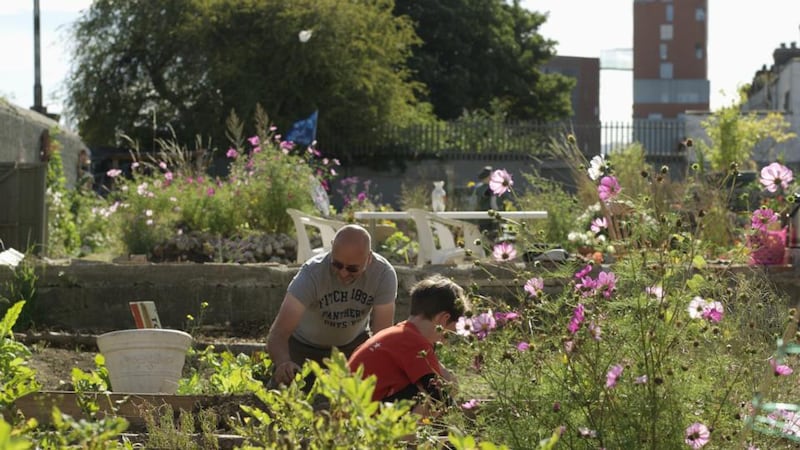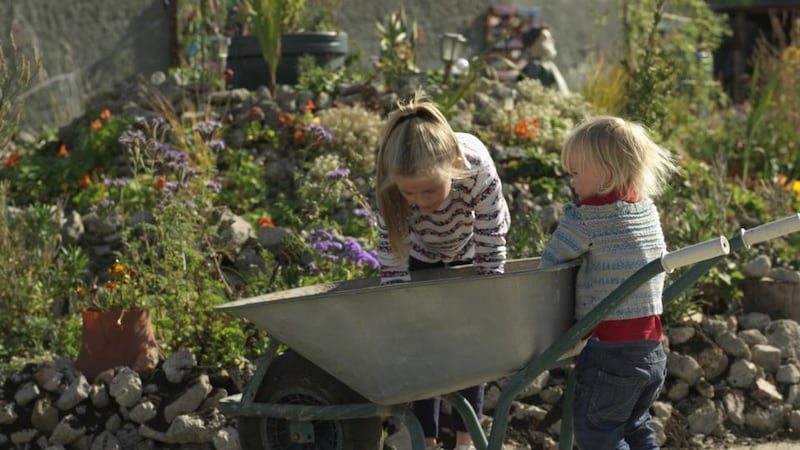Some people become gardeners, while others are born green-fingered. A shining example of the latter is Dublin-born Michael Flanagan (1833-1931), the former city councillor, alderman, nationalist, father of the legendary Dublin character known as 'Bird' Flanagan, father-in-law of president WT Cosgrave, and possibly the city's most successful market gardener.
During his long life, Flanagan built up a huge, thriving market garden business that at its peak took in at least 500 acres of prime land in southwest Dublin, stretching from Tallaght to Rialto.
It's long gone now and the land is mostly covered by modern housing, but his name lives on as part of the lore of the city. So it's only fitting that when members of Rialto's Back of the Pipes Residents' Association got together in 2010 to establish a community garden on the footprint of the demolished Fatima Mansions housing development known as Block E, the called it Flanagan's Fields after the market gardener who once cultivated that same plot of land.


It is fitting also that this is no ordinary community garden, but one that combines 21st-century growing methods and cutting-edge technology to grow a range of delicious and nutritious food in the most sustainable of ways.
At its heart is a newly-built, gleaming geodesic grow-dome, a thing of strangely angular beauty made from transparent plastic stretched taut over a lattice of timber triangles. Inside, the happy band of gardeners drawn from the local community includes school children and pensioners as well as a rich mix of nationalities. They will grow salads, herbs and vegetables using a hydroponics system fed by harvested rainwater stored in underground tanks and run by a solar-powered water pump.
Surrounding the dome is a wonderfully productive, eclectic and organically-managed kitchen garden that serves as a window into the many different worlds of the city as well as into its past.
An 18th-century map of Dublin, for example, inspired founder member Doug Hazel to lay the garden's produce-filled beds out in a pattern that mimics the old field patterns of the city.
In one sunny corner, the group has made a Zen garden where a statue of the Virgin Mary (a replacement for one that originally stood near the old flat complex) stands next to a Star of David and the Greek goddess Gaia’s name picked out in Ogham script, all set against a backdrop representing a traditional Islamic garden.
Earlier this year, the group held a Lá na Prátaí at which a local imam and the parish priest were present to bless the seed potatoes before they were planted.
"There were queues of people waiting to have their potatoes blessed," says group member Michael Judd. Knowledge and advice is shared out among this group of gardeners as generously as the resulting tasty organic produce.
Some members, such as French-born Sylvie Levasseur-Reilly, who grew up on a small farm in Burgundy, and Seattle-born Marcia Harris, who often brings her granddaughter Ursula to the garden, are seasoned kitchen gardeners familiar with the annual cycle of sowing, growing and harvesting, whether that's cultivating homegrown tomatoes or making spicy capers from pickled nasturtium seeds.
Others, such as Eilish O’ Carroll, who regularly works in the garden with her son Sam, came as relative beginners.
But everyone brings enthusiasm, a willing pair of hands and an interest in growing their own food, including key member Mick Hooper, who keeps a protective eye on the garden from his house across the street.
"Blood, sweat and tears," is how Sandy Hazel describes the process of carving a flower-filled and impressively productive food garden from a site that was once filled with concrete and rubble, while stressing that Dublin City Council has been hugely supportive of the project from the start. Countless barrow-loads of rubble and tarmac had to be removed from the ground with jackhammers and pick axes before they could put even one plant in it, while everything had to be done on a budget.
The futuristic grow-dome – the impressive handiwork of community gardeners Jamie Roche, Niall O' Brien, Ivan Rynn and Eoin O' Neill – cost the group a fraction of what it would have if bought from a specialist supplier. Plants came as donations, including the giant palm in the geodesic dome (rescued from a disused office) installed with the help of a volunteer work party from Google.
Funding came from Dublin City Council, Agenda 21, GIY and the Dublin Bus Community Spirit Awards as well as some unexpected sources. "One local charity just handed us a cheque for €500."
As this remarkable award-winning community garden has grown, so has the number of people interested in getting involved, including Tús, Eco Unesco and homework groups from local schools who now have their own plots on site.
Eventually the group also hopes that visitors from nearby St James’s Hospital will use it as a garden in which to convalesce. “When we started Flanagan’s Fields garden, we were looking for something that would draw the community together, something that would act as a catalyst for a conversation,” says Doug Hazel.
“It’s turned out to be all that and much, much more.”
THIS WEEK IN THE GARDEN
Late November and into early December is the time to prune grape vines growing outdoors against a fence, wall or pergola, or under cover in a polytunnel, glasshouse or conservatory, following what’s known as the ‘rod and spur’ system (see rhs.co.uk for details). Where space is limited, vines can also be grown in large containers and trained as standards, as seen in Cleve West’s gold medal-winning Chelsea show garden earlier this year.
This is also a good time of the year to propagate new plants from cuttings, but wait until early spring to plant young bare-root grape vines. Unless you have a very sheltered, sunny garden, grow them under cover (roots outside, vine inside), giving these sun-loving plants a weed-free, fertile and well-drained soil. Online suppliers include irishgrapevines.ie
Move wooden garden furniture into the garden shed for the winter months to prevent it being damaged by heavy winter rainfall and icy frosts. Where space is at a premium, just stacking it near a north-facing wall and covering it with a sheet of heavy–duty plastic will also help to protect it from damage.
Nutty about nuts? Now’s the time to order bare-root nut trees for planting before Christmas. For particular advice on the varieties best suited to your garden, see the website of Westport-based specialist nursery Fruit & Nut (fruitandnut.ie), which stocks a wide range of nut varieties suitable for growing in Irish conditions, including different cultivars of cobnuts, filberts, heartnuts, almonds, chestnuts, and walnuts.












